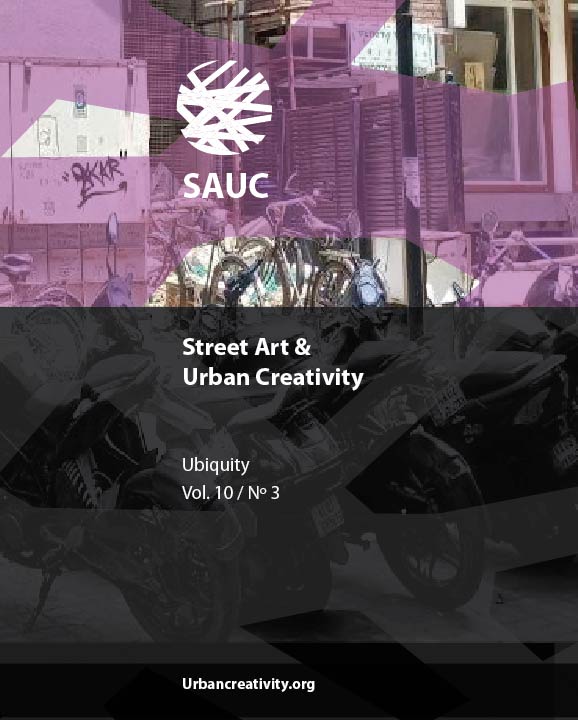Lisbon vs Porto: Contrasts in Urban Art Public Management
DOI:
https://doi.org/10.25765/sauc.v7i1.484Keywords:
graffiti, urban art, public art, street art, visuality, urban managementAbstract
Urban Art is considered one of the most important artistic movements of the 21st century and Portugal is not behind on this trend. Many of its cities are authentic open air museums and portuguese artists — like Vhils, Bordallo II and Mr. Dheo — are distinguished all over the World. The two main cities of Portugal — Lisbon and Porto — have invested a lot of their efforts, combating vandalism, legitimizing urban art, legalizing murals and supporting street artists. In Lisbon, GAU (Galeria de Arte Urbana) has sponsored dozens of legal murals and allowed for the painting of several others by private interests. Porto’s Urban Art Program started a few years later but has since funded several murals and authorized artistic events by private businesses.
In this article two PHD students collaborate to analyze the development of urban art in both Lisbon and Porto, mainly focusing on the last decade; to understand the contrasts on the artistic management of public art; and to examine its possible impacts in Lisbon and Porto.
Downloads
Global Statistics ℹ️
|
203
Views
|
142
Downloads
|
|
345
Total
|
|
Downloads
Published
How to Cite
Issue
Section
License
Those authors who publish in this journal accept the following terms:
-
Authors retain copyright.
-
Authors transfer to the journal the right of first publication. The journal also owns the publishing rights.
-
All published contents are governed by an Attribution-NoDerivatives 4.0 International License.
Access the informative version and legal text of the license. By virtue of this, third parties are allowed to use what is published as long as they mention the authorship of the work and the first publication in this journal. If you transform the material, you may not distribute the modified work. -
Authors may make other independent and additional contractual arrangements for non-exclusive distribution of the version of the article published in this journal (e.g., inclusion in an institutional repository or publication in a book) as long as they clearly indicate that the work was first published in this journal.
- Authors are allowed and recommended to publish their work on the Internet (for example on institutional and personal websites), following the publication of, and referencing the journal, as this could lead to constructive exchanges and a more extensive and quick circulation of published works (see The Effect of Open Access).













